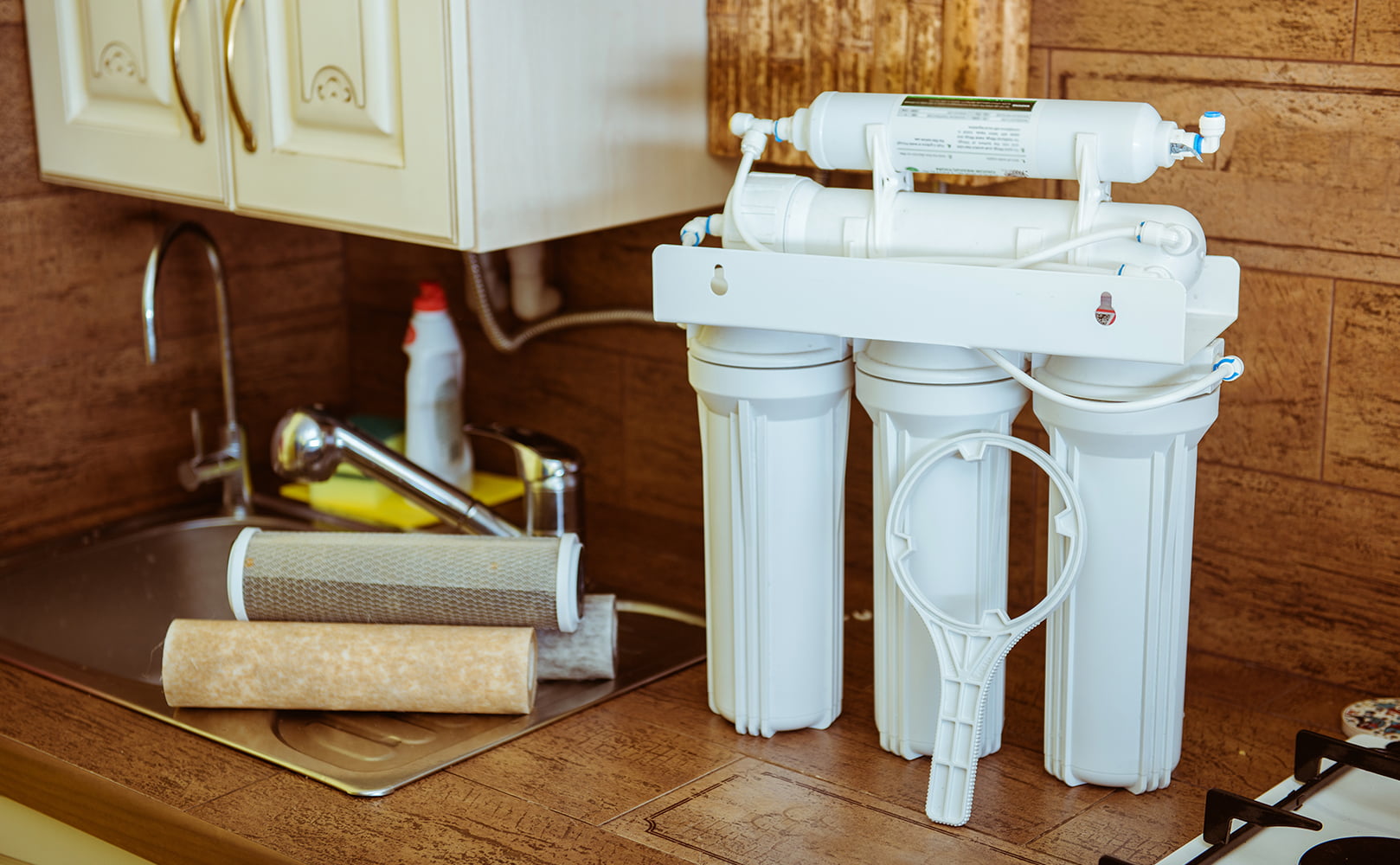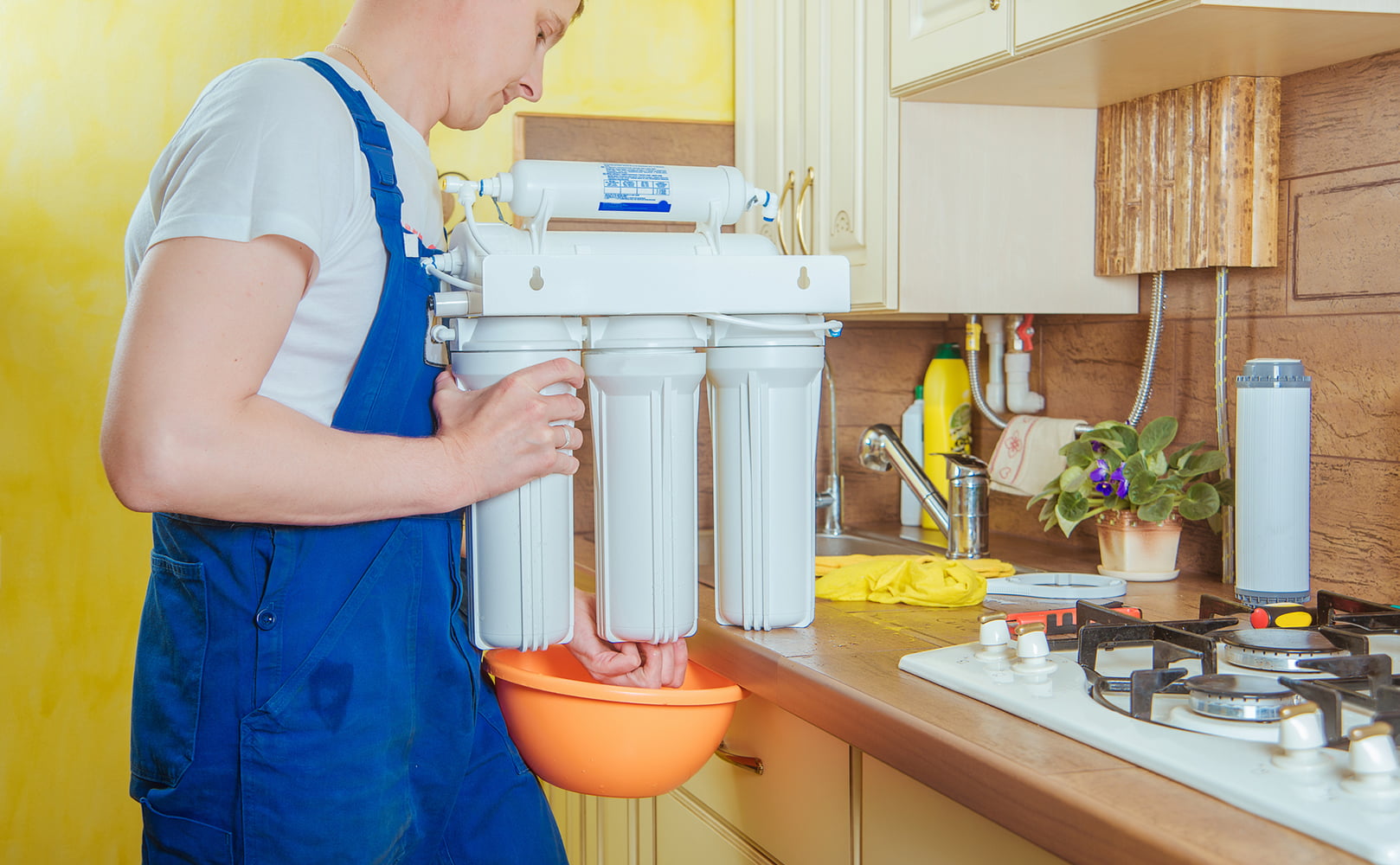How to Choose an Under Sink Water Filter
Written by: Alexandra Uta // Last Updated: Sep 11, 2023
This page may contain affiliate links. If you buy a product or service through such a link we earn a commission at no extra cost to you. Learn more.
If you’ve decided to invest in an under sink water filter, you might have already noticed that the market is quite diverse and offers a wide selection of products to pick from.
Choosing the right model for your circumstances is important. Otherwise, you may end up spending more money than you should on the initial purchase, or tie yourself to something that requires more ongoing expenses than you anticipated.
So, here is our guide on how to choose an under sink water filter.
Key Takeaways
- To choose the right under sink water filter, you need to consider your water quality.
- Choose a system capable of removing the contaminants you’re facing.
- Tip: Look out for NSF standards.
- There are single-stage (for mild contamination), multi-stage (for more serious contamination), and reverse osmosis systems (for more serious contamination).
The Different Types of Under Sink Water Filters to Choose from
There are several main types of under sink water filters you can choose from, organized according to their filtration methods and installation. Depending on how much space you have available in your home and how contaminated your water supply is, some options will be much more suitable than others.
Single-Stage (Carbon)
Single-stage under sink water filters, as their name implies, use only a single stage of filtration to purify water passing through them. This might sound insufficient, but it’s actually more than enough for many people’s needs. Often, they are especially useful for removing bad smells and odors due to the use of active carbon.
Multi-Stage Under Sink Systems
In comparison, multi-stage under sink filtration systems run your water through several filtration stages, each designed to deal with specific types of contaminants. This makes them more effective at purifying with more severely contaminated water, but also comes with a few downsides, including a higher average price and taking up more space.
Reverse Osmosis
With reverse osmosis, water is forcefully pushed through a delicate membrane with the use of high pressure. The membrane is specifically designed to allow water molecules through, but almost anything larger gets pushed back and remains on the other side.
Reverse osmosis membranes are great at dealing with certain types of contamination including high TDS levels, but are of little use otherwise compared to other filtration methods for example when it comes to removing chemicals. That’s why RO systems for home use always come with additional pre-filtration.
Inline vs Dedicated Faucet
You’ll also notice that some models come with their own attached faucet that you’re meant to install yourself. This can be useful in cases where it’s difficult to attach an inline filtration system to your existing plumbing, but also requires more space. It also needs some additional work as you’ll have to create an opening for the faucet to run through.
How to Choose an Under Sink Water Filter?
To choose the ideal under sink water filter for your needs, you’ll have to identify the contamination levels you’re dealing with, and understand your home situation. For example, you may not always be able to purchase a high-end multi-stage model even if you can afford it, because you don’t have enough space under your sink to fit it in.
Water Quality: What Kind of Treatment Do You Need?
Your first step should be to get familiar with the quality of your home water supply. You can order an at-home DIY test kit to get some rough overview of the situation. However, these will usually only tell you what kinds of contaminants you’re dealing with, not their exact concentrations.
A specialized laboratory will provide you with more detailed information, but it will also cost more and will involve some waiting. Depending on where you live, you might also be able to check local reports about your water quality.
The Right Filtration Process
If you’re dealing with heavily contaminated water, you’ll probably want to invest in a reverse osmosis filter system or another type of multi-stage under sink water filter. Those usually provide the best overall filtration, but come at a higher price. Otherwise, a single-stage activated carbon filter may be enough to fulfill your requirements.
NSF Certifications
NSF certifications can be a useful tool for identifying the exact types of contaminants a filter is designed to target. The only problem is that they don’t tell you much about the exact filtration capabilities of the filter, just that it removes certain contaminants at a level above a specific reference value. This may not always be sufficient for addressing your situation.
Filter Stages
A multi-stage under sink water filter is a good idea if you can afford it and need to treat more heavily contaminated water. It will provide you with more consistent results, but it will also cost more, both in the initial purchase and in ongoing filter replacements. Multi-stage under sink water filters also take up more space.
Flow Rate & Water Pressure
If you’re living in a large household with several thirsty family members, you should pay attention to output flow rate and pressure. If an under sink water filter is too slow to serve your family enough water on demand, it won’t do you any good.
Installation
Installing an under sink water filter is not very complicated, as long as you have some common household tools and a basic understanding of your plumbing setup. Things get a bit more challenging when you’re dealing with a filter with a dedicated faucet, in which case you’ll have to make an opening for the faucet, among other things.
Filter Life & Maintenance
Pay attention to how often you need to replace the filter cartridges. Some seemingly simple models can turn out to be very expensive in the long term due to the cost of their filter replacements. Conversely, buying a more expensive filtration system usually comes with the benefit of lower ongoing costs.
Space
One of the greatest advantages to under sink water filters is that they don’t take up a lot of “useful” space. They reside under your sink, tucked away from view and not obstructing your daily tasks. Each system still requires some space though, even if you will rarely see it on a daily basis.
This is even more true for multi-stage filtration systems. If you live in a smaller home with limited space, make sure to check the dimensions of each model you’re considering. Check how your plumbing is laid out as well – it’s occasionally possible that you can’t fit an under sink filter, even though you technically have enough free space, because it’s impossible to hook it up to your existing plumbing without significant modification.
Costs
As mentioned above, the initial purchase price of an under sink water filter is only part of what you’ll spend on it in the long term. You must also account for filter replacements, which can start getting quite expensive very fast with some models. Pay attention to any maintenance costs as well. Buying a more expensive model can sometimes be worthwhile if you want to minimize additional expenses on things like repairs.
Advantages and Disadvantages of Under Sink Water Filters
Advantages
Doesn’t Take Up Useful Space
Since an under sink water filter resides in an area that you normally don’t use for anything other than storing cleaning agents and similar items, it has a very small impact on your day-to-day comfort. This can be great for smaller households with limited space, where a countertop filter may easily eat up a double-digit percentage of your available room.
Easy to Install and Maintain
Installation and maintenance of an under sink water filter are both very easy and don’t require any specialized tools or experience. The only exception is for models with a dedicated faucet, but even those can be handled relatively easily by most people.
Can Be Used by Anyone
Water filter pitchers and other countertop models come with various inherent usability flaws that may make them unsuitable for certain groups of people, like small children and the elderly. With an under sink model, you don’t need to do any heavy lifting or move anything around, which makes them ideal for those situations.
Disadvantages
May Not Be Ideal for Large Households
Larger households typically have multiple water faucets used for drinking. Covering them all with a single under sink water filter is impossible, meaning that you’ll need to purchase a separate filter for each exit point. This is already quite expensive upfront, but it gets even worse when you consider filter replacement costs which can stack up very fast.
Dedicated Faucet Models Require Additional Installation Work
As mentioned earlier, using a model with a dedicated faucet means that you have to do some additional work for its installation. If you’re not confident with your handy skills, this can be a bit of a problem, requiring you to get help from a professional.
If you have any questions about how to choose an under sink water filter please don’t hesitate to leave a comment below!
Information provided on BOS is for educational purposes only. The products and services we review may not be right for your individual circumstances.
We adhere to strict editorial guidelines. Rest assured, the opinions expressed have not been provided, reviewed, or otherwise endorsed by our partners – they are unbiased, independent, and the author’s alone. Our licensed experts fact-check all content for accuracy. It is accurate as of the date posted and to the best of our knowledge.



